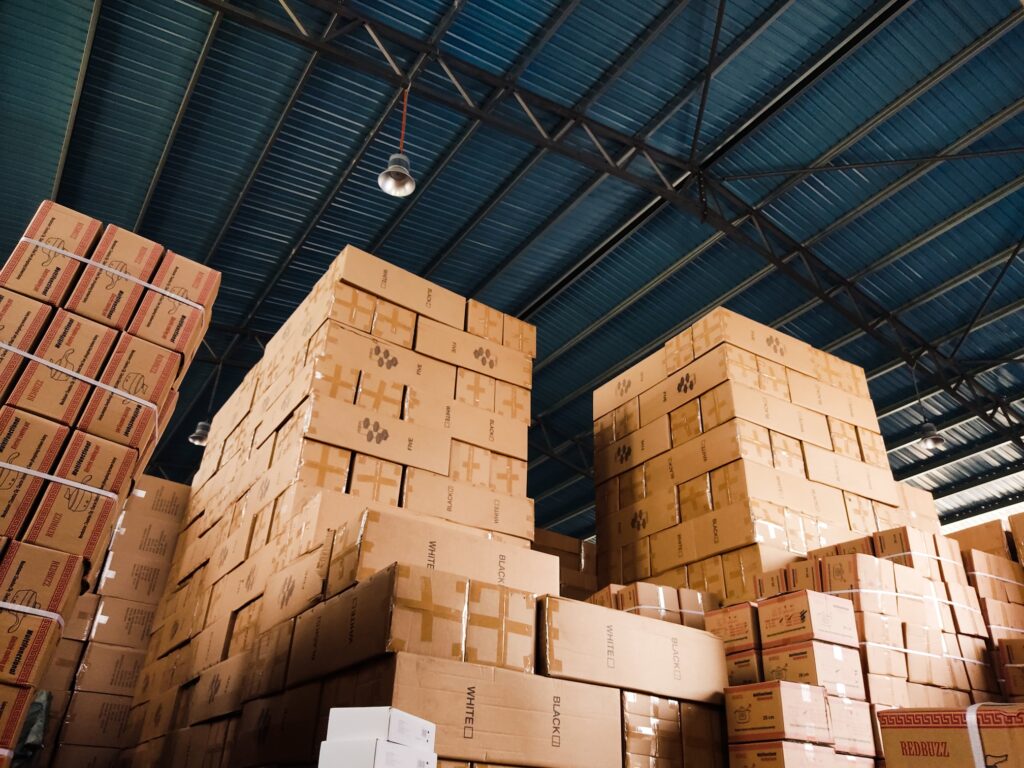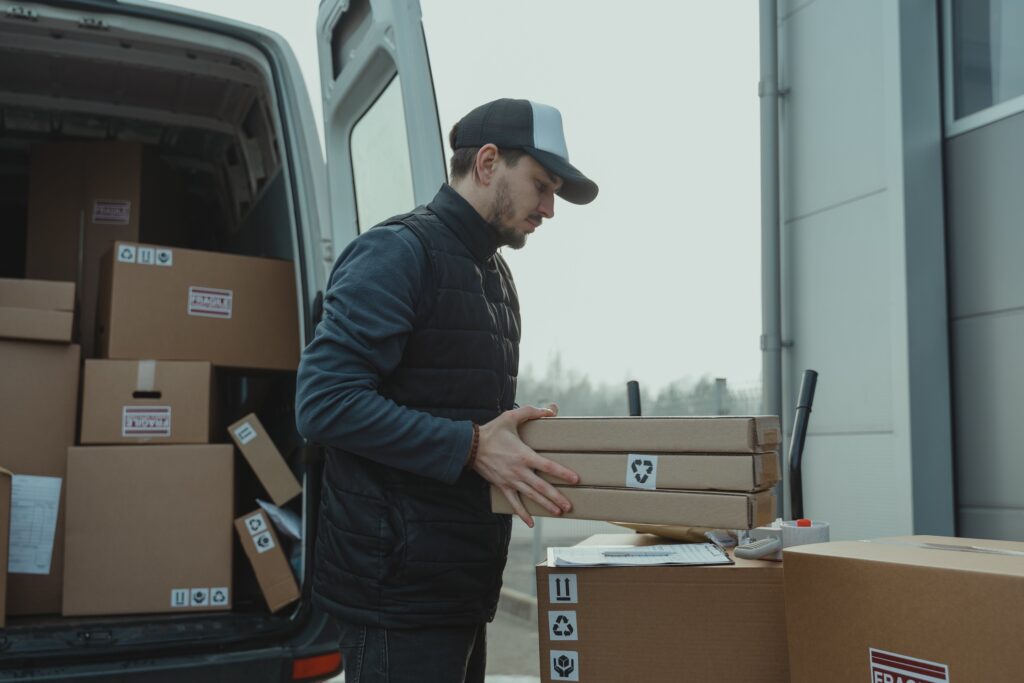Amazon’s Rise From eCommerce Giant to America’s Top Delivery Powerhouse

Once mocked by major shipping incumbents UPS and FedEx, Amazon has risen to become a dominant player in the delivery sector. A decade ago, Amazon relied heavily on the established giants to ship its products while executives at those companies and industry analysts dismissed the idea that the eCommerce upstart could ever replace them.
However, explosive expansion coupled with strategic missteps on the part of the old guard have rapidly shifted the competitive landscape. Fueled by runaway growth in online shopping, Amazon now stands as a formidable force, equipped with its own fleet of cargo planes, thousands of tractor trailers and a sprawling network of home delivery partners.
By fully integrating shipping into its end-to-end operations, Amazon has rewritten the rules of the delivery game.

Amazon’s Delivery Volume is Up 13% Over Last Year
Amazon’s delivery continues to accelerate at a blistering pace. According to internal projections obtained by The Wall Street Journal, the eCommerce giant had already delivered over 4.8 billion packages in the U.S. before Thanksgiving this year, and is on track to hit 5.9 billion by the end of the year.
That staggering volume represents a 13% increase over last year’s record shipment tally of 5.2 billion packages that Amazon moved across its rapidly expanding delivery network.
Fueled by the company’s Prime membership program which offers free shipping, more American households than ever before are relying on Amazon to ferry products to their doorsteps, cementing the company’s position as the shipping option of choice for a growing share of eCommerce.
That means that Amazon.com has grabbed the crown of biggest delivery business in the U.S., surpassing both UPS and FedEx in parcel volumes.
Thinking About Hiring an Amazon Management Agency?
Canopy’s Partners Achieve an Average 84% Profit Increase!
Let’s talkAmazon is projected to dramatically extend its lead over the established carriers this year. The United States Postal Service still reigns as the largest parcel delivery service by total volume, providing last-mile support for hundreds of millions of packages from all three companies annually.
That’s in spite of the fact that Amazon’s figures include only packages that Amazon shipped from beginning to end. With both UPS and FedEx, their totals include packages passed to the postal service for final delivery.
As reported by the Wall Street Journal, in 2016, FedEx’s then-CEO Fred Smith opined that the idea of Amazon becoming a shipping logistics competitor was “fantastical.” “In all likelihood, the primary deliverers of eCommerce shipments for the foreseeable future will be UPS, the U.S. Postal Service and FedEx.”

Amazon Isn’t Doing All These Deliveries Alone
Amazon has taken a page from the FedEx playbook in its quest to rule the delivery routes. Back in 2018, the company rolled out a franchise-style program that enabled entrepreneurs to launch their own local package delivery businesses for as little as $10,000.
The model echoes that of FedEx Ground, which has relied on independent contractors rather than employees to handle home deliveries along shorter routes.
But while the veteran courier long depended on such operators stitching together coverage across the country, their role with Amazon looks far different today as demand explodes. The legions of new franchise owners essentially serve as soldiers in Amazon’s vast, contracted army fighting for parcel supremacy neighborhood by neighborhood.
Amazon’s sprawling delivery franchise network now boasts some 200,000 drivers crisscrossing American roads and neighborhoods. This mammoth contracted workforce has become the driving force behind Amazon’s ability to ratchet up its daily delivery capacity at a stunning clip. It represents a key strategic advantage over the traditional shipping giants like UPS and FedEx, which employ their own drivers to meet volatile demand.
While the established carriers must painstakingly train and hire more full-time employees when parcel volumes surge, Amazon can rapidly scale up or down by bringing on more delivery franchises to serve overflow needs.

The Pandemic Created Pain, Suffering, and Business Opportunities
The upheaval of the pandemic proved the perfect launching pad for Amazon to advance its dominance in eCommerce. As consumers flocked online amid lockdowns, the company seized a pivotal moment to massively scale up its physical infrastructure almost overnight.
In the span between early 2020 and late 2021, Amazon nearly doubled the size of its nationwide network—building out hundreds of new warehouses, package sorting centers, air hubs and local delivery stations.
Amazon’s latest gambit to widen its logistics lead involves a coast-to-coast restructuring aimed at localized speed and efficiency. According to comments made by CFO Brian Olsavsky in an internal meeting this month obtained by the Journal, the company has moved to regionalize its distribution network in order to slash delivery times across large swathes of the country.
The strategic shift entails situating inventory and sorting capacity closer to end consumers to avoid packages criss-crossing the entire U.S. before final delivery.
Olsavsky attributes recent “delivery speed improvements as a key driver of growth,” noting that quicker arrival times have directly fueled increased order frequency among Prime members.
The underlying math is straightforward – the faster Amazon can get products to doorsteps, the more loyal customers convert from competitors or ramp up their own purchase volumes. And with consumer expectations for shipping speed constantly rising, Amazon continues staying two steps ahead as rivals strain to catch up. The latest restructuring provides yet another structural advantage to please customers while boosting the bottom line.
Amazon Opens the (Prime Shipping) Door to Non-FBA Brands
Small direct-to-consumer businesses have always had a complex relationship with Amazon, oscillating between benefit and challenge. Amazon’s dominating presence in the eCommerce sector can seem overwhelming, especially for niche markets where smaller entities operate.
The company’s expansive influence and market strength often place them at the forefront, even in specialized segments, which can be daunting for less established sellers.
However, Amazon recently introduced ‘Buy with Prime‘, a feature that enables small businesses to offer their products on their own websites while leveraging Amazon’s renowned fulfillment services.
Reaching out to an audience of over 150 million Prime members, Amazon is now extending the advantages of its Prime membership in a way that was previously unforeseen, potentially changing the game for small sellers.
Last year, Amazon accounted for nearly 60% of all online retail transactions in the U.S. This figure can be interpreted in two ways. On one hand, it showcases Amazon’s significant dominance in the online retail market.
On the other, it also highlights that a substantial portion of online sales, around 40%, occurs outside Amazon’s platform, representing a considerable market where Amazon does not earn any revenue.
As Amazon continues to add different ways to tap into eCommerce deliveries, it won’t be long before both UPS and FedEx are a distant speck in the rear view mirror.

Stay Up to Date With Canopy Management
Canopy Management’s experts will continue to monitor Amazon’s expansion into fulfillment and track the implications for entrepreneurs and online sellers.
If you’d like to get a clearer picture of what it could mean to your Amazon business, or would like to know more about the services that Canopy offers, we’re here to help.
Canopy Management is a full-service marketing agency for Amazon and Walmart sellers. Our team consists of former Amazonians, multi-million dollar sellers, and award-winning experts.
When you consider the many ways that Canopy Management can help you grow your business, you’ll see why selling on Amazon is much easier “under the Canopy.”
- Strategic Growth Planning
- Listing Copywriting Optimization
- Listing Photography
- Product Videography
- Advertising Management
- Customer Service
- Demand Side Platform (Amazon DSP)
- Amazon Posts
- Full Service Management
- Amazon Review Aggregation



